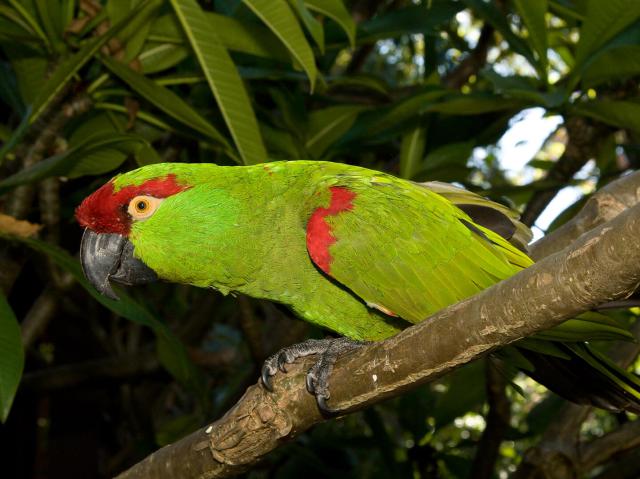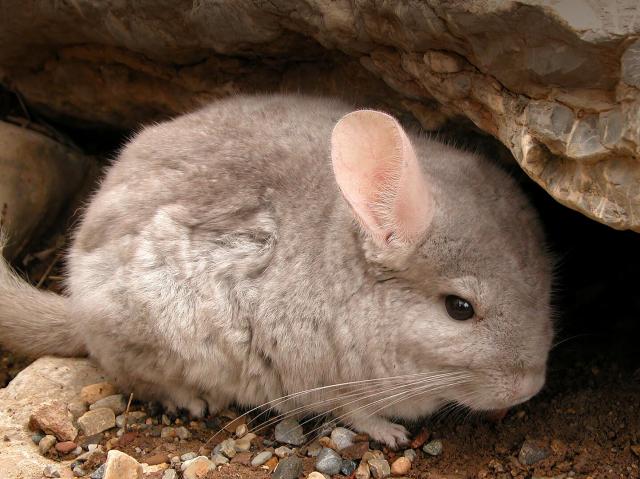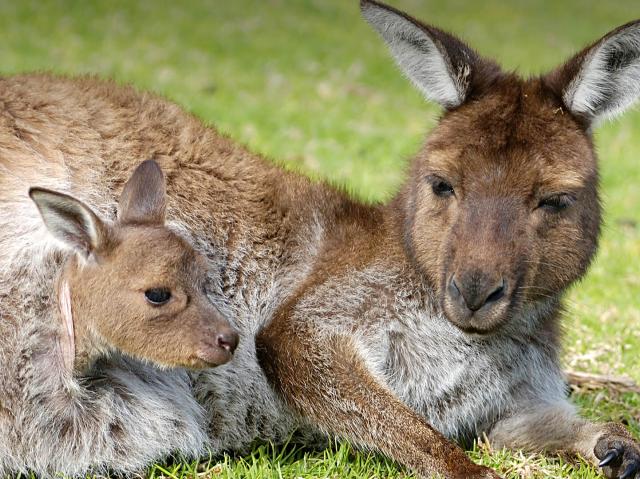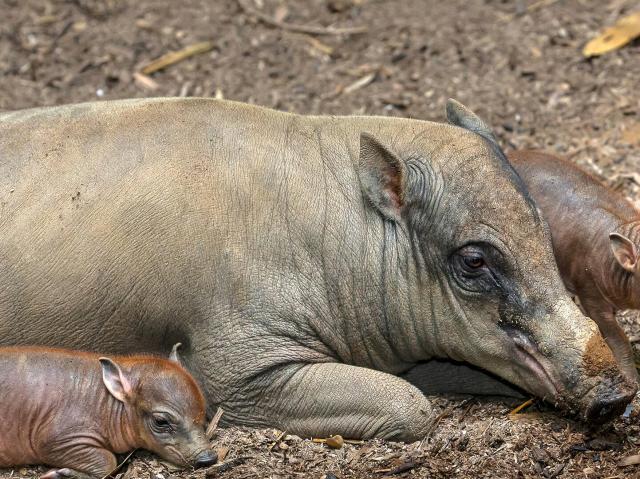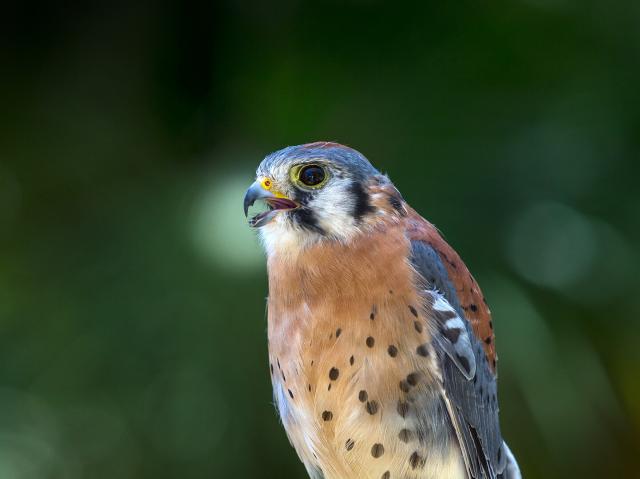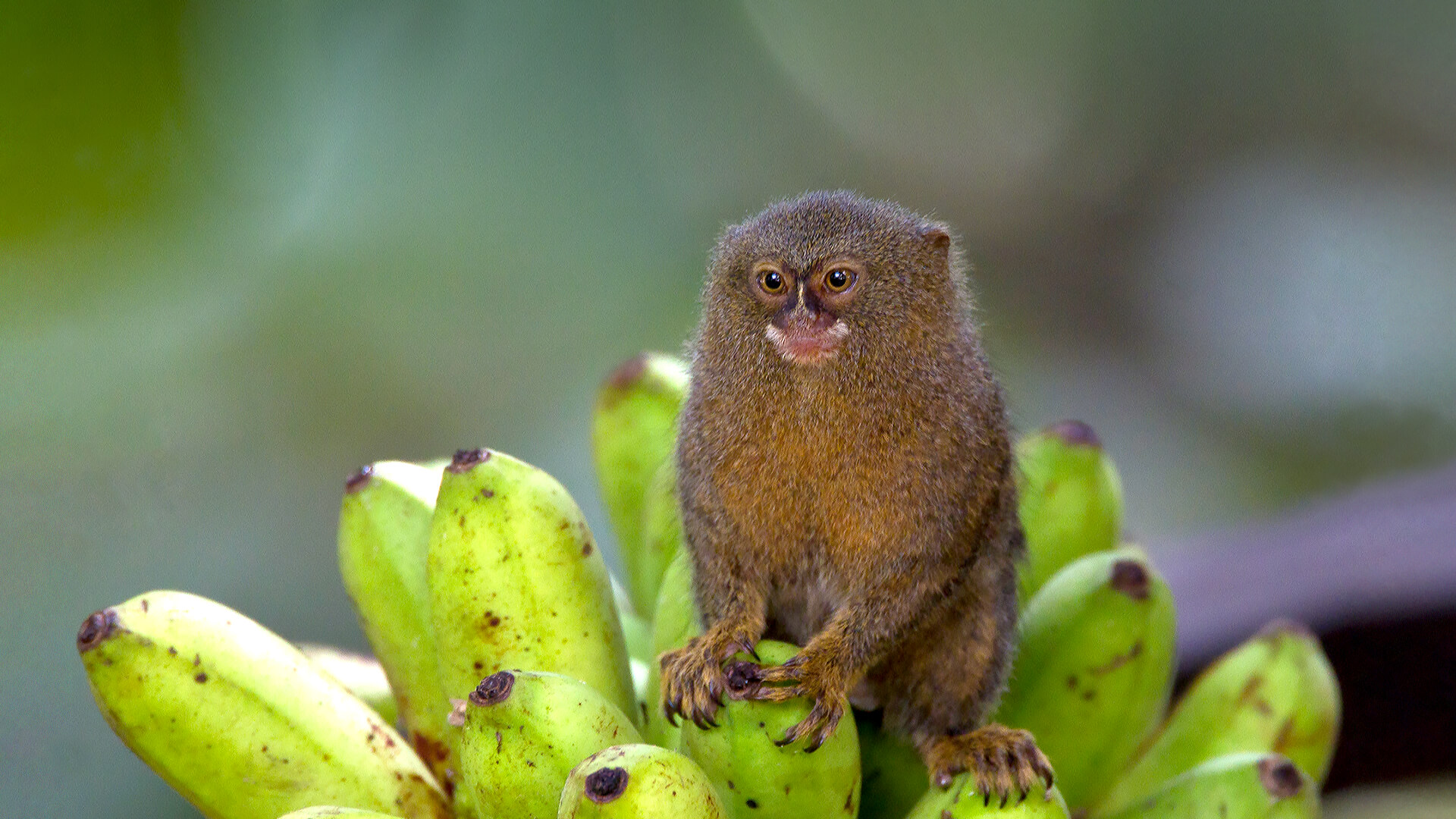
Pygmy Marmoset

- CLASS: Mammalia (Mammals)
- ORDER: Primate
- FAMILY: Cebidae
- GENUS: Callithrix
- SPECIES: pygmaea

ABOUT
Mini monkeys: High in the rainforest canopy of South America lives a tiny monkey. It dodges behind tree trunks and branches, freezing and dashing, just like a squirrel. It also has brown fur and a long tail like a squirrel—but it's a pygmy marmoset, the world's smallest monkey!
Marmosets and their cousins, the tamarins, are some of the tiniest primates around. A full-grown pygmy marmoset could fit in an adult human's hand, and it weighs about as much as a stick of butter. But there is nothing tiny about a pygmy marmoset's tail: it's longer than its body! The tail is not prehensile, but it helps the little monkey keep its balance as it gallops through the treetops.
Both male and female pygmy marmosets are orange-brown. Each hair has stripes of brown and black, called agouti coloring. This coloration gives them good camouflage. A mane of hair covers the pygmy marmoset's ears. Most primates have flat nails on the ends of their fingers, along with opposable thumbs that allow them to grasp objects. Pygmy marmoset fingernails are like claws to help them climb up and down tree trunks. They do not have opposable thumbs.
HABITAT AND DIET
Pygmy marmosets live in the Amazon region of Brazil, Colombia, Peru, Ecuador, and northern Bolivia. They make their home and living in forest trees or bamboo thickets near or alongside rivers and floodplains. Pygmy marmosets prefer living in dense rainforests where there are lots of hiding places among the plants. Each marmoset group has a small home range of less than half an acre. They feed from just a few trees.
Because they are so small, pygmy marmosets can become prey for cats, harpy eagles, hawks, and snakes. That is why they dash from one safe spot to the next. Their neck is flexible, and they can turn their head backward to spot predators. They are deliberate about their movements to avoid drawing the attention of predators. But when they need to move, pygmy marmosets are fast, leaping several feet to avoid the predators that would like to make a meal out of them.
The ability to climb is important for pygmy marmosets, as tree sap is their favorite food. They scamper up and down trees and thick vines headfirst and gouge a hole in the bark or vine with their sharp lower teeth, using an up-and-down sawing motion. When the sap puddles up in the hole, they lap it up with their tongue. Pygmy marmosets have certain trees they like within their territory; they can make up to 1,300 holes in each tree! Sometimes they lie in wait for insects, especially butterflies, which feed at the sap holes. The marmosets also eat some nectar and fruit.
At the San Diego Zoo, pygmy marmosets eat veggies, fruit, a specialized commercial diet for New World monkeys, crickets, mealworms, wax worms, and hard-boiled eggs.
FAMILY LIFE
Pygmy marmosets live in extended families, called troops, of up to nine monkeys but with an average of five members. Usually the troop has a breeding pair, their babies, and any of their adult children. The parents stay together for life. Living in a group is useful for pygmy marmosets. There are more pairs of eyes to spot predators, and everyone helps take care of the little ones. For added safety, the troop spends the night among thick vines or in a tree hole.
A mother pygmy marmoset's gestation period is about 4.5 months, and she can give birth every 5 to 7 months. She almost always has two babies, but in zoos, pygmy marmosets have had three or even four babies in one litter. Each newborn is about the size of a human thumb! The father helps deliver the babies, cleans them up, and then takes over their care. He carries the newborns piggyback style for their first two weeks, bringing them back to the mother to nurse. Older siblings may help, too. When they are a bit older, the babies hide while the rest of their family looks for food until they are strong enough to travel with the group.
Usually the young marmosets are weaned and can follow the troop by three months of age. It takes them about two years to grow as large as the adults. They may leave the troop at this point to start a family of their own, or they may stay to help raise the newest babies.
Pygmy marmosets communicate with each other by chattering and trilling in high-pitched voices. They can make sounds so high in pitch that humans can’t hear them. Certain squeaks and calls express danger or other urgent monkey messages. They also make faces to express emotions like contentment, surprise, or fear by moving their lips, eyelids, ears, and the hair around their face. We humans do that, too! These mini monkeys groom one another, and that helps establish social bond. They are fussy about keeping their fur in good shape. Pygmy marmoset families have territories marked by scent. This signals neighboring troops to leave each other alone.
CONSERVATION
If the current rate of habitat destruction can be slowed, these tiny monkeys will have a big chance at long-term survival in their forest home. Their largest threat is the pet trade, due to their tiny size, cuddly appearance, and appealing face. We cannot express this enough: monkeys do not make good pets. The United States has banned the import of primates, and most South American countries don't allow primate exports anymore.
By supporting San Diego Zoo Wildlife Alliance, you are our ally in saving and protecting wildlife worldwide.
LIFE SPAN
Up to 12 years; up to 18 years in zoos
YOUNG
Gestation: 4.5 months
Number of young at birth: 1 to 3; usually 2
Weight at birth: .4 to .5 ounces (3 to 15 grams)
Age of maturity: 1.5 to 2 years
SIZE
Length: 4.6 to 6.2 inches (12 to 16 centimeters)
Tail length: 6.8 to 9 inches (17 to 23 centimeters)
Weight: 3 to 5 ounces (85 to 140 grams)
FUN FACTS
The pygmy marmoset is the smallest monkey but not the smallest primate—that title belongs to the mouse lemur.



